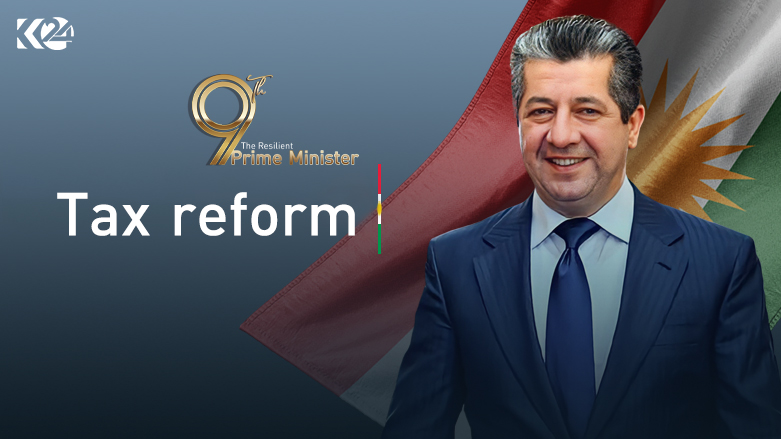KRG Ninth Cabinet provides updated taxation statistics

ERBIL (Kurdistan 24) – The Kurdistan Regional Government’s (KRG) Ninth Cabinet has released updated figures for taxation in the Region from 2019-2022, showing increasing revenue for the government over the past two years.
In the past four years, illegal tax exemptions have been abolished, and the tax rate has been determined using more reliable information.
Meanwhile, the Cabinet has not collected taxes from ordinary citizens but obliged taxpayers to pay their share according to applicable laws in order to further serve citizens.
According to the Ninth Cabinet’s data, legal action has been taken against 12,502 taxpayers who evaded taxes for various reasons. More than 2.5 trillion dinars ($1,924,163,250) of taxes have been collected. 74% of total tax revenue comes from corporations, while the other 26% comes from individual taxpayers.
In 2019, tax revenue was $478.7 million. In 2020, tax revenue decreased to $441.6 million. In 2021, tax revenue had seen growth after an economic rebound from COVID-19, which led to revenue of $607.5 million. In 2022, tax revenue reached its highest level of $696.3 million.
In early 2020, the COVID-19 epidemic led to the closure of many businesses in the Region, as the KRG mandated strict curfews to stop the spread of the virus. This relationship is expressed in the lack of revenue growth from the 2019-2020 tax years.
Moreover, the Cabinet has distributed monthly salaries and has not added any debt. However, the Cabinet has repaid more than $3 billion in previous debts.
The Cabinet has reduced unnecessary expenditures in all its institutions and used Internet Information Services (IIS) to obtain approval for operating expenditures for all ministries and departments, as well as non-ministerial offices.
